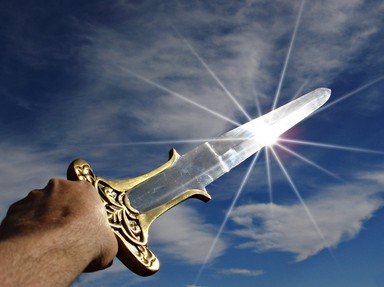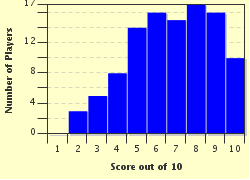Quiz Answer Key and Fun Facts
1. When the town of Bastogne came under siege during the Battle of the Bulge, what was Brig. General Anthony McAuliffe's response to the German commander's request that he and his men surrender?
2. Which hero of the American Revolutionary War uttered the immortal lines "I have not yet begun to fight"?
3. In 480 BC, which Spartan king led a last ditch stand to delay the Persian army at the battle of Thermopylae ?
4. Which Mediterranean island came under siege from the combined German and Italian forces during World War 2 in an attempt to force its surrender?
5. The Battle of Rorke's Drift was immortalised in the film "Zulu" where a handful of men held out against a far superior force of Zulu warriors. How many Victoria Crosses were awarded to the men defending the outpost?
6. Which Italian abbey was besieged by Allied forces during the Second World War?
7. The film "Ironclad" depicted the siege of Rochester Castle in Kent by King John in 1215. How historically accurate was this film in relation to the actual siege that took place?
8. Which Russian city was besieged by German forces during World War Two from September 1941 until January 1944?
9. During which offensive in the Vietnam war was the Khe Sanh Combat Base placed under siege by North Vietnamese forces?
10. Which key castle in Kent was besieged for three months during the First Barons' War in 1216?
Source: Author
mcsurfie
This quiz was reviewed by FunTrivia editor
bloomsby before going online.
Any errors found in FunTrivia content are routinely corrected through our feedback system.


